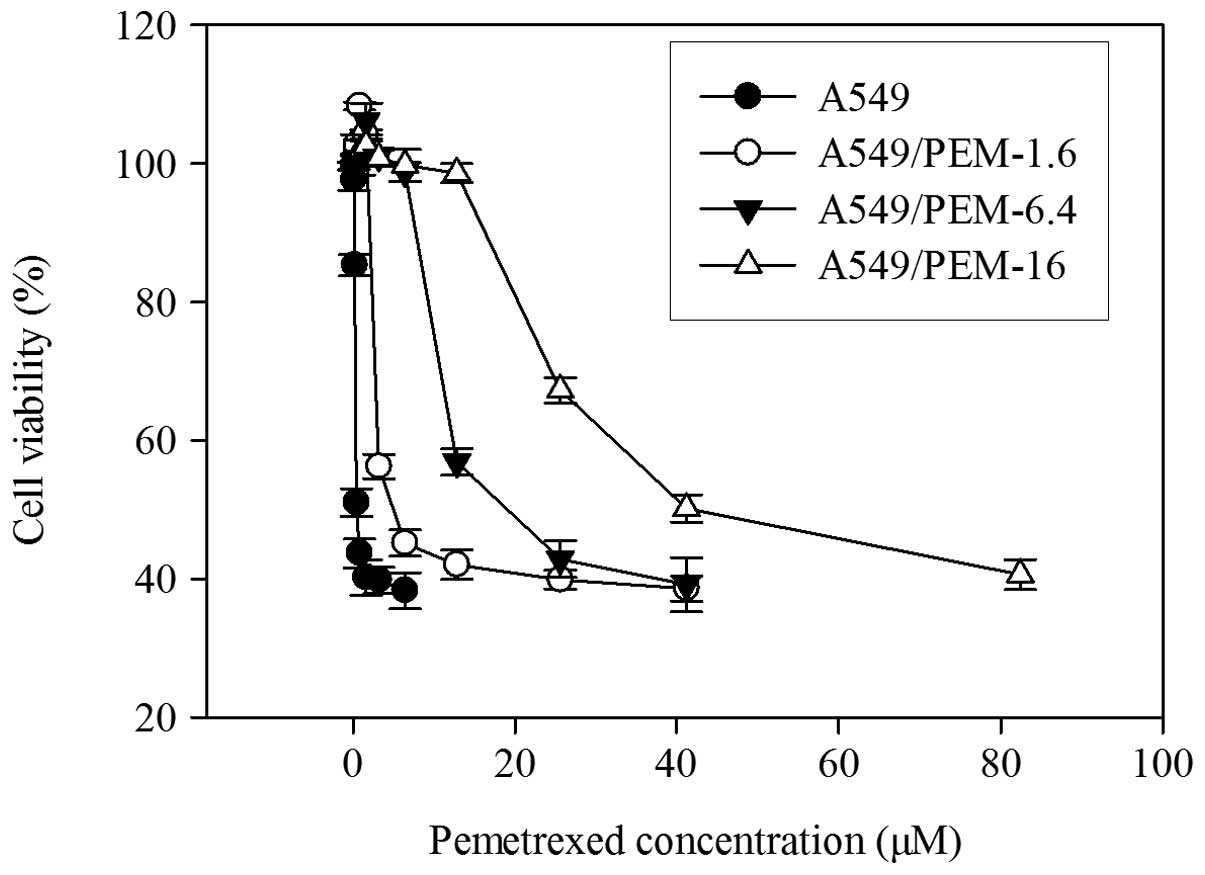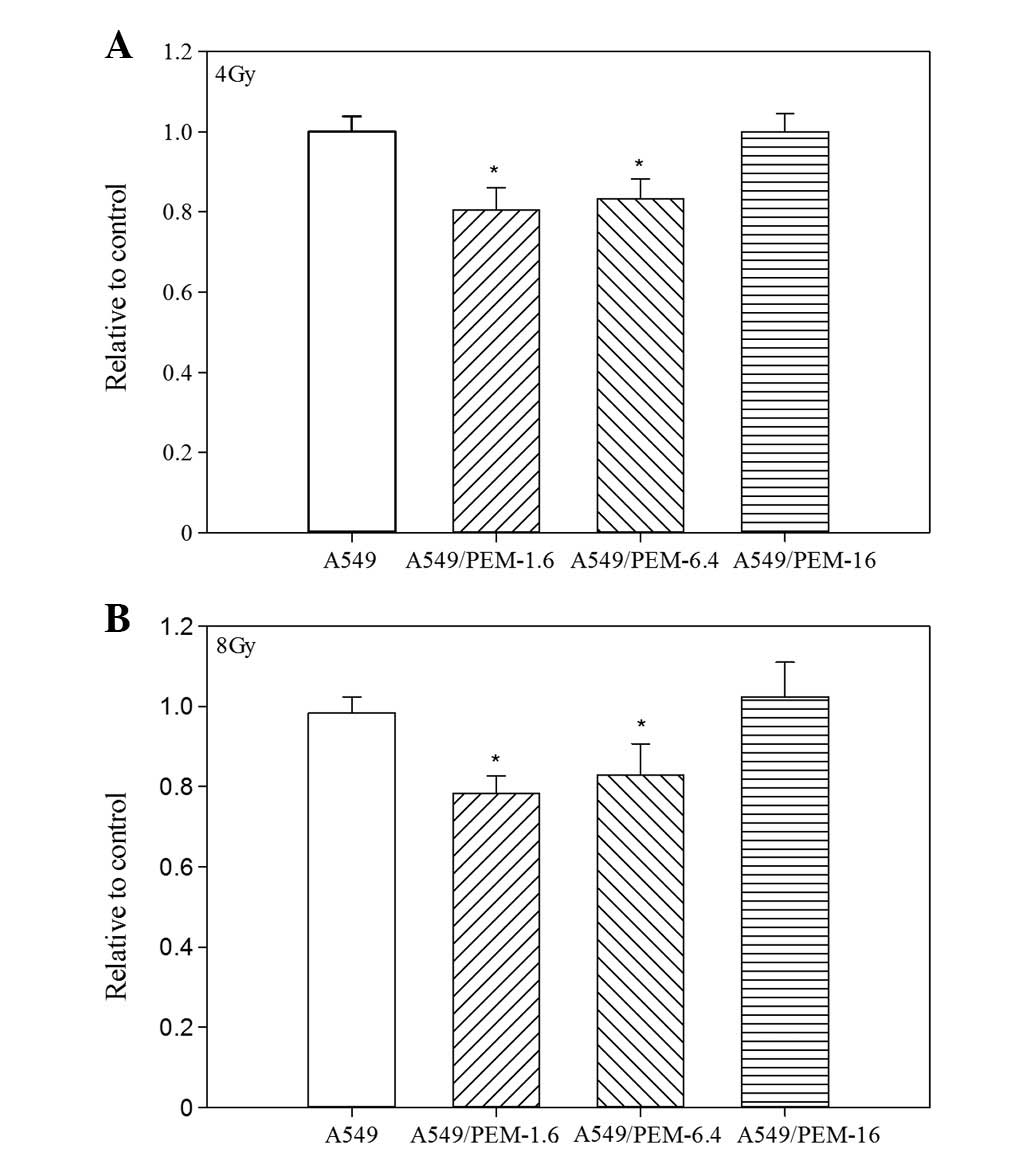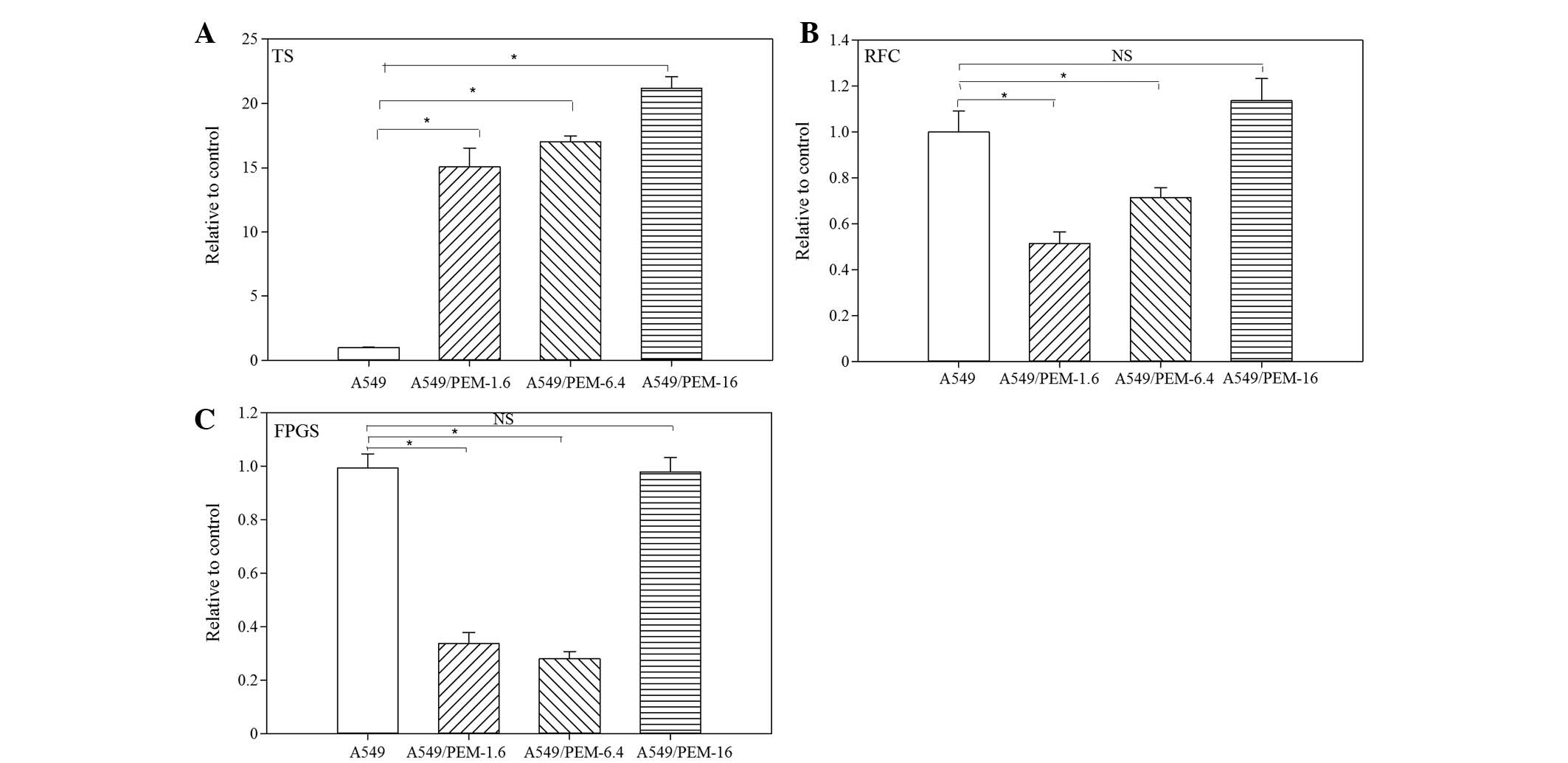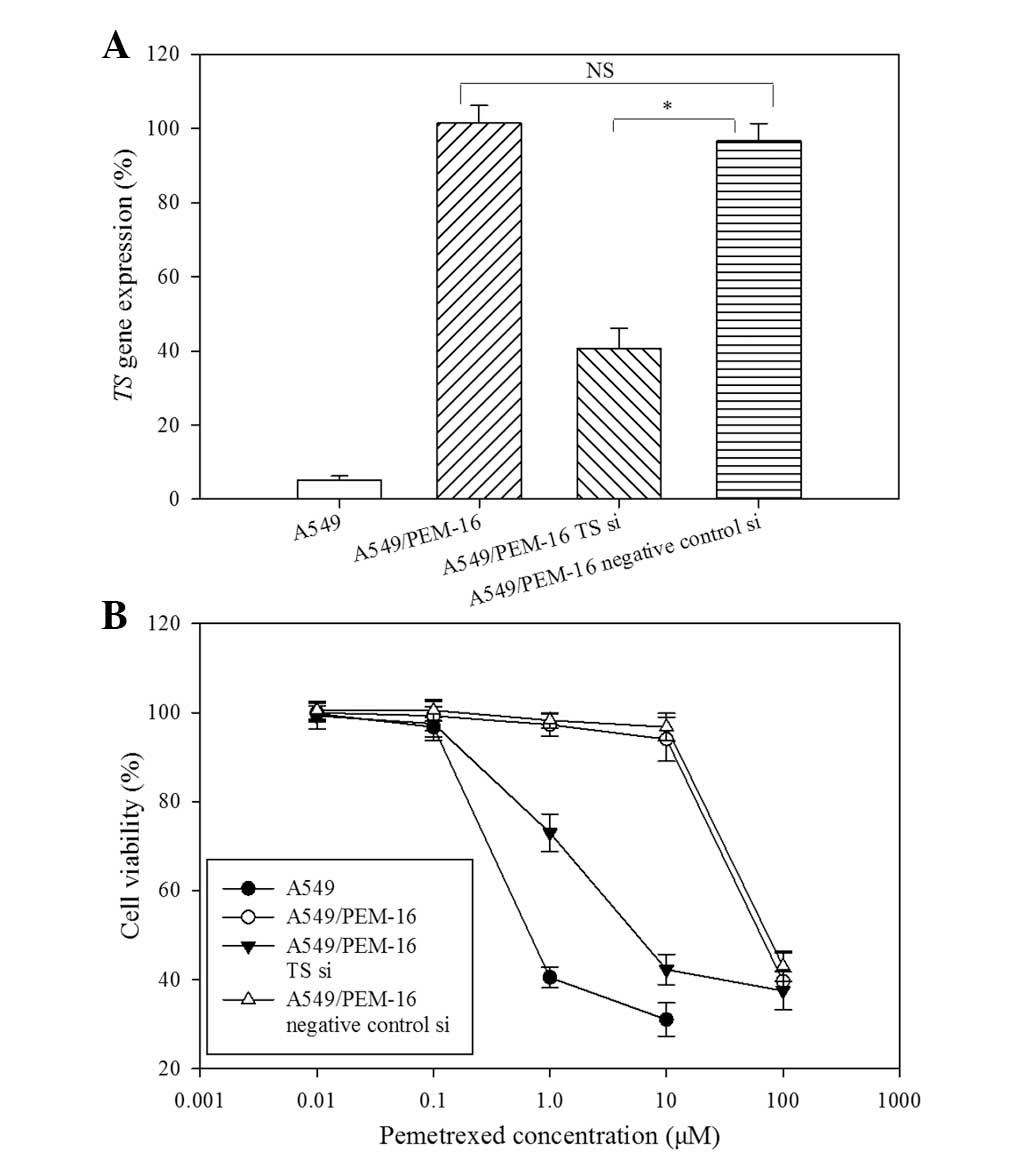|
1
|
American Cancer Society. Cancer Facts and
Figures. 2012, http://www.cancer.org/acs/groups/content/@epidemiologysurveilance/documents/document/acspc-031941.pdf.
Accessed January 5, 2012
|
|
2
|
Breathnach OS, Freidlin B, Conley B, Green
MR, Johnson DH, Gandara DR, et al: Twenty-two years of phase III
trials for patients with advanced non-small-cell lung cancer:
sobering results. J Clin Oncol. 19:1734–1742. 2001.PubMed/NCBI
|
|
3
|
Bunn PA Jr and Kelly K: New
chemotherapeutic agents prolong survival and improve quality of
life in non-small cell lung cancer: a review of the literature ad
future directions. Clin Cancer Res. 4:1087–1100. 1998.PubMed/NCBI
|
|
4
|
Kelly K, Crowley J, Bunn PA Jr, Presant
CA, Grevstad PK, Moinpour CM, et al: Randomized phase III trial of
paclitaxel plus carboplatin versus vinorelbine plus cisplatin in
the treatment of patients with advanced non-small-cell lung cancer:
a Southwest Oncology Group Trial. J Clin Oncol. 19:3210–3218.
2001.
|
|
5
|
Scagliotti GV, De Marinis F, Rinaldi M,
Crinò L, Gridelli C, Ricci S, et al: Phase III randomized trial
comparing three platinum-based doublets in advanced non-small-cell
lung cancer. J Clin Oncol. 20:4285–4291. 2002. View Article : Google Scholar
|
|
6
|
Schiller JH, Harrington D, Belani CP,
Langer C, Sandler A, Krook J, et al: Comparison of four
chemotherapy regimens for advanced non-small-cell lung cancer. N
Engl J Med. 346:92–98. 2002. View Article : Google Scholar
|
|
7
|
Fossella F, Pereira JR, von Pawel J,
Pluzanska A, Gorbounova V, Kaukel E, et al: Randomized,
multinational, phase III study of docetaxel plus platinum
combination versus vinorelbine plus cisplatin for advanced
non-small-cell lung cancer: the TAX 326 study group. J Clin Oncol.
21:3016–3024. 2003. View Article : Google Scholar : PubMed/NCBI
|
|
8
|
Gridelli C, Ardizzoni A, Douillard JY,
Hanna N, Manegold C, Perrone F, et al: Recent issues in first-line
treatment of advanced non-small-cell lung cancer: Results of an
International Expert Panel Meeting of the Italian Association of
Thoracic Oncology. Lung Cancer. 68:319–331. 2010. View Article : Google Scholar
|
|
9
|
Scagliotti G, Hanna N, Fossella F,
Sugarman K, Blatter J, Peterson P, et al: The differential efficacy
of pemetrexed according to NSCLC histology: a review of two phase
III studies. Oncologist. 14:253–263. 2009. View Article : Google Scholar : PubMed/NCBI
|
|
10
|
Shih C, Chen VJ, Gossetti LS, Gates SB,
MacKellar WC, Habeck LL, et al: LY231514, a
pyrrolo[2,3-d]pyrimidine-based antifolate that inhibits multiple
folate-requiring enzymes. Cancer Res. 57:1116–11123. 1997.
|
|
11
|
Gangjee A, Jain HD and Kurup S: Recent
advances in classical and non-classical antifolates as antitumor
and antiopportunistic infection agents: Part II. Anticancer Agents
Med Chem. 8:205–231. 2008. View Article : Google Scholar : PubMed/NCBI
|
|
12
|
Scagliotti GV, Parikh P, von Pawel J,
Biesma B, Vansteenkiste J, Manegold C, et al: Phase III study
comparing cisplatin plus gemcitabine with cisplatin plus pemetrexed
in chemotherapy-naive patients with advanced-stage non-small-cell
lung cancer. J Clin Oncol. 26:3543–3551. 2008. View Article : Google Scholar
|
|
13
|
Hanna N, Shepherd FA, Fossella FV, Pereira
JR, De Marinis F, von Pawel J, et al: Randomized phase III trial of
pemetrexed versus docetaxel in patients with non-small-cell lung
cancer previously treated with chemotherapy. J Clin Oncol.
22:1589–1597. 2004. View Article : Google Scholar : PubMed/NCBI
|
|
14
|
Weiss GJ, Langer C, Rosell R, Hanna N,
Shepherd F, Einhorn LH, et al: Elderly patients benefit from
second-line cytotoxic chemotherapy: a subset analysis of a
randomized phase III trial of pemetrexed compared with docetaxel in
patients with previously treated advanced non-small-cell lung
cancer. J Clin Oncol. 24:4405–4411. 2006. View Article : Google Scholar
|
|
15
|
Chu E, Callender MA, Farrell MP and
Schmitz JC: Thymidylate synthase inhibitors as anticancer agents:
from bench to bedside. Cancer Chemother Pharmacol. 52(Suppl 1):
S80–S89. 2003. View Article : Google Scholar : PubMed/NCBI
|
|
16
|
Ozasa H, Oguri T, Uemura T, et al:
Significance of thymidylate synthase for resistance to pemetrexed
in lung cancer. Cancer Sci. 101:161–166. 2010. View Article : Google Scholar : PubMed/NCBI
|
|
17
|
Takezawa K, Okamoto I, Okamoto W, et al:
Thymidylate synthase as a determinant of pemetrexed sensitivity in
non-small cell lung cancer. Br J Cancer. 104:1594–1601. 2011.
View Article : Google Scholar : PubMed/NCBI
|
|
18
|
Sun JM, Han J, Ahn JS, Park K and Ahn MJ:
Significance of thymidylate synthase and thyroid transcription
factor 1 expression in patients with nonsquamous non-small cell
lung cancer treated with pemetrexed-based chemotherapy. J Thorac
Oncol. 6:1392–1399. 2011. View Article : Google Scholar : PubMed/NCBI
|
|
19
|
Chen CY, Chang YL, Shih JY, et al:
Thymidylate synthase and dihydrofolate reductase expression in
non-small cell lung carcinoma: the association with treatment
efficacy of pemetrexed. Lung Cancer. 74:132–138. 2011. View Article : Google Scholar : PubMed/NCBI
|
|
20
|
Saga Y, Suzuki M, Mizukami H, Urabe M,
Fukushima M, Ozawa M and Sato I: Enhanced expression of thymidylate
synthase mediates resistance of uterine cervical cancer cells to
radiation. Oncology. 63:185–191. 2002. View Article : Google Scholar : PubMed/NCBI
|
|
21
|
Chattopadhyay S, Zhao R, Krupenko SA,
Krupenko N and Goldman ID: The inverse relationship between reduced
folate carrier function and pemetrexed activity in a human colon
cancer cell line. Mol Cancer Ther. 5:438–449. 2006. View Article : Google Scholar
|
|
22
|
Adjei AA, Salavaggione OE, Mandrekar SJ,
et al: Correlation between polymorphisms of the reduced folate
carrier gene (SLC19A1) and survival after pemetrexed-based therapy
in non-small cell lung cancer: a North Central Cancer Treatment
Group-based exploratory study. J Thorac Oncol. 5:1346–1353. 2010.
View Article : Google Scholar
|
|
23
|
Wang Y, Zhao R and Goldman ID: Decreased
expression of the reduced folate carrier and folypolyglutamate
synthetase is the basis for acquired resistance to the pemetrexed
antifolate (LY231514) in an L1210 murine leukemia cell line.
Biochem Pharmacol. 65:1163–1170. 2003. View Article : Google Scholar
|


















